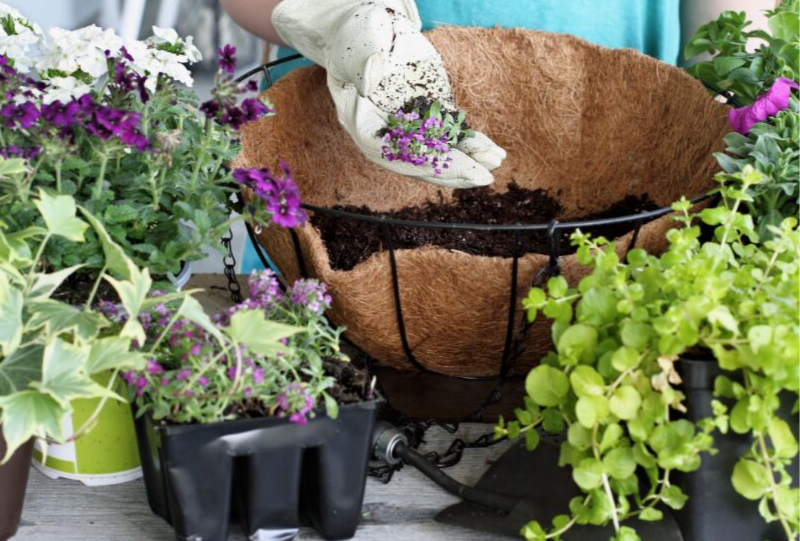Yates Account
Join now
Create a Yates account today!
Sign up to join the Yates Garden Club for monthly e-mails packed with seasonal inspiration, tips for success & exclusive promotions.
Plus if you’re a Garden Club member you can take part in the Yates Growing Community - a blog to share successes, get advice & win prizes in fun challenges along the way!

Forgot password
Enter the email address associated with your account, and we'll email you a new password.

Growing plants in hanging baskets can be challenging for both plants and gardeners! Success depends on choosing the right plants, a suitable potting mix and a practical hanging basket.
The time of year is important, too. Summer is the most difficult season for baskets so, if you’ve failed during the hot weather, it might be worth trying again now that temperatures are gentler.
It’s not surprising that baskets need extra care to help them survive and thrive. They’re suspended up in the air where they’re exposed to heat, drought and every breeze that blows. The first rule to remember is: the bigger the basket, the easier it will be to care for.
Use the largest basket you can fit into the available space. Wire baskets look good when lined with sphagnum moss or bark or coco fibre, but they’re very porous and dry out readily. A simple trick is to line the liner with plastic sheeting before filling with potting mix. Puncture a few drainage holes into the plastic before adding the mix then, after watering, use scissors to trim any sheeting that’s still visible.
Plastic baskets, which don’t lose water from their sides, are a far more practical option. This allows the plants to draw on the reserve of moisture that has collected in the base. No matter what sort of basket you use, it helps to use a good quality mix (such as Yates Premium Potting Mix) and to blend in some pre-hydrated Yates Waterwise Water Storage Crystals before planting up.

Mixed flowers and foliage make interesting fillers for baskets. Perhaps start with some upright plants in the centre – mondo grass or libertia have good vertical lines. Then add some of the many flowers that can be planted in autumn. For example, violas and pansies will bloom for months, especially if dead flowers are regularly removed. Polyanthus are cheery and colourful. Lobelias, Dichondra ‘Silver Falls’ and other draping plants look good tumbling down the sides.
Baskets filled with edibles have a special appeal. And, because they take up little space, they can be grown in courtyard and balcony gardens. Strawberries look attractive dangling over the basket sides, and they’re protected from pests like snails (though not from birds and possums!). Leafy vegies such as lettuces, spinach and rocket work well.
Herbs are good options, too, as most are fairly compact growers. A good-sized basket can house a group of mixed herbs such as chives, oregano, lemon balm and parsley. Hang this in a convenient spot near the kitchen door where the herbs can be harvested (with scissors) just as they’re needed.
Feed hanging baskets with Yates Thrive Natural Fish Seaweed+ Plant Food Concentrate. Watch out for pests and diseases like aphids, caterpillars and powdery mildew on your ornamental flowers, these are easily controlled with Yates Rose Gun Spray Ready to Use.

















Share
Share this article on social media